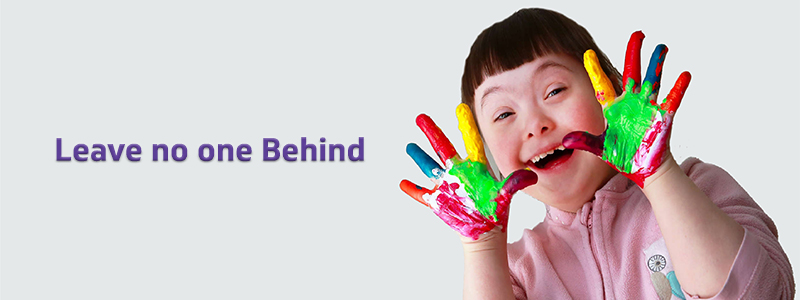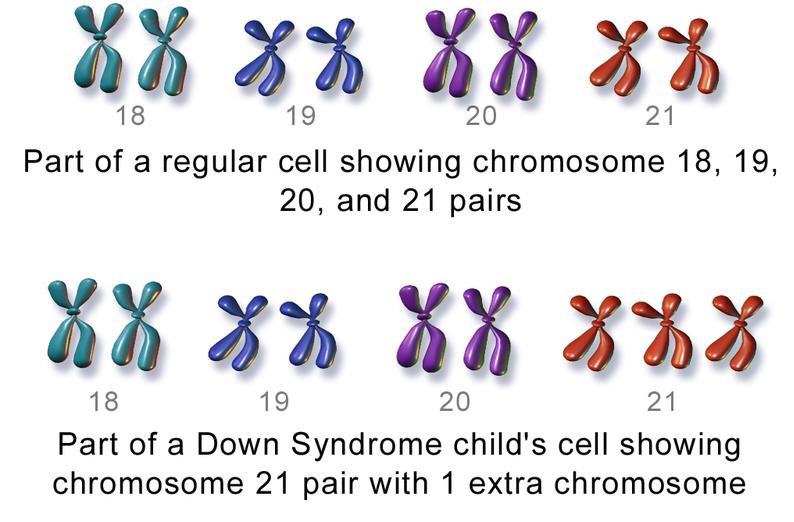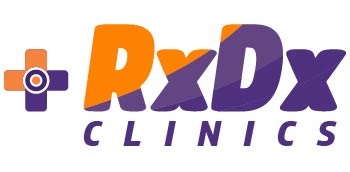
Hurrah!! I have an extra chromosome. Well, we have something extra and isn’t that cool? Alright, what are we talking about here? We are talking about the condition called Down’s Syndrome. Today many of us having Down’s syndrome are leading a very normal satisfactory life. We did our schooling, got our degree also got a job! We are enjoying every moment in our lives now. But to get here we have overcome lot of hitches and it’s definitely not so easy. Now we really wish that everyone with Down’s Syndrome could reach where we are today. Let’s join hands to bring in awareness to them that they can also do it and we should ‘Leave no one behind’.
Down’s syndrome is one of the most common genetic abnormalities seen in humans. It is found in about one per 1,000 babies born each year. In 2015, Down’s syndrome affected 5.4 million individuals globally and resulted in 27,000 deaths, down from 43,000 deaths in 1990.
Let us first make you aware of what exactly is Down’s syndrome-
Every cell in the human body has genes which carries all the information about how the body will grow, function and look. Genes are packed in rod-like structures called chromosomes. Each cell has 23 pairs of chromosomes. Down’s syndrome is a genetic disorder in which an individual is born with an extra copy of chromosome 21 in each cell. This extra genetic material leads to physical and developmental changes.

Down’s syndrome is associated with mild to moderate intellectual disability, physical growth delay and distinguishing facial features. The average IQ of a young adult with Down’s syndrome is about 50 which is equivalent to the mental ability of a 8 or 9 year-old child, but this may vary widely.
Each individual with Down’s syndrome can be different; Developmental and intellectual problems can be mild to severe. Some people are healthy while some may have serious health issues related to heart.
Some of the most common features seen in Down’s syndrome are:
- Small head and short neck
- Flat face and upward slanting eyes
- Unusally shaped or small ears
- The tongue protrudes and seems to be too large for the mouth
- Poor muscle tone
- Short, broad hands with single crease in the palm
- Excessive flexible joints
- Short height
The individual may have growth retardation and as a baby size would be normal, but may not grow as tall. The average height for an adult male with Down’s syndrome is around 5 ft 1 in and for a female is 4 ft 9 in. Bowleggedness is common and obesity occurs with aging.
Mental function is decreased and the IQ of the person may range from mild disability (50 to 70) to moderate (35 to 50). There can be language development delay due to hearing impairment and speech delay. There is a delay in gross motor skills like crawling and walking and fine motor skills may also take time to develop.
Infants with Down’s syndrome usually experience developmental delays like time to sit, crawl, walk, and talk. So, parents need to know that developmental delays are common among children with Down’s syndrome. Using a team approach, physical therapists, occupational therapists, and speech therapists may help improve language, motor, and social skills to the maximum. Medical issues associated with Down’s syndrome, including those affecting the heart or the gastrointestinal system, may require evaluation and care, sometimes corrective surgeries.
With increased understanding, better support and improved facilities within the community the quality of life has increased in recent years for the person with Down’s syndrome. Although there can be great variability in the mental capability between individuals, but for those with apposite mental function, it is feasible to complete education, live and work independently.
About The Author
Ms. Preethi Shankar– BOT (AIOTA Certified), RxDx.
Book Appointment with our Occupational Therapists
Download RxDx Smart Healthcare App Now!!!



